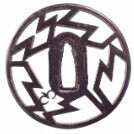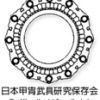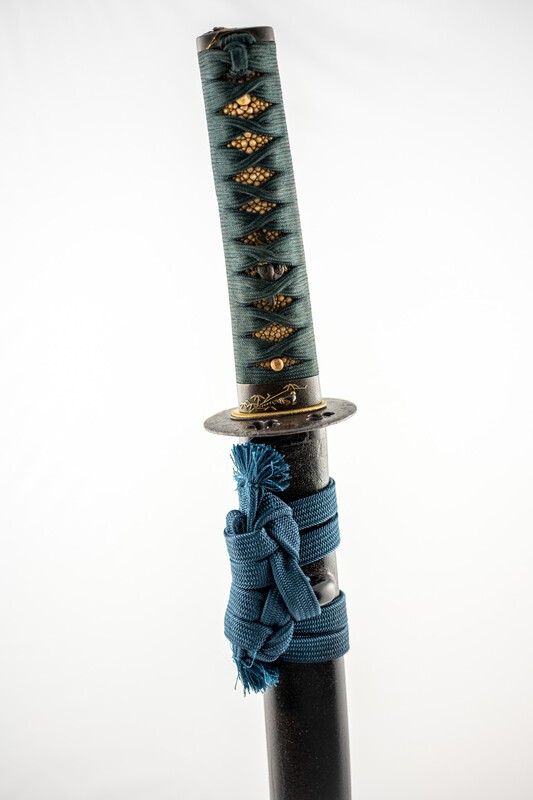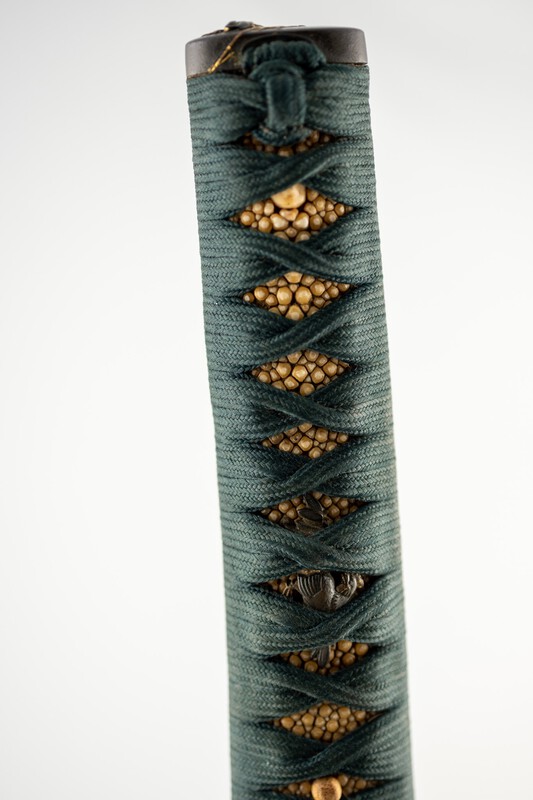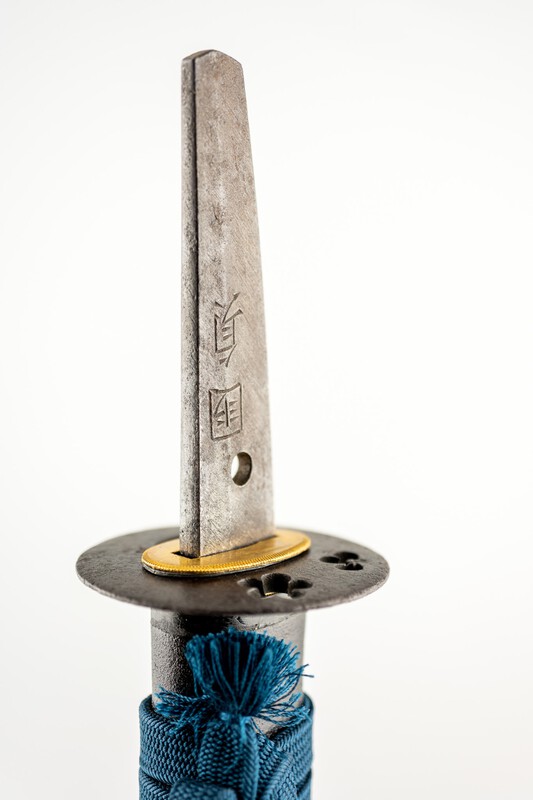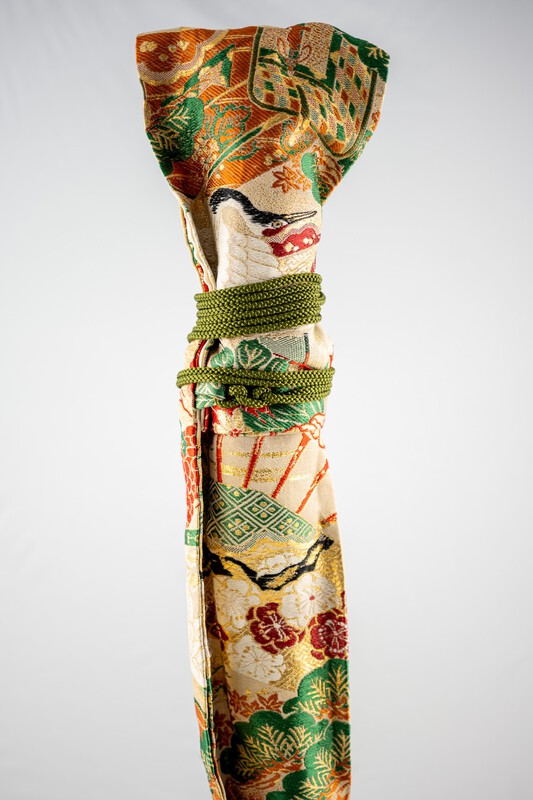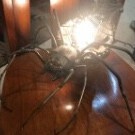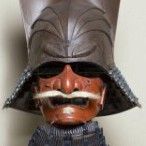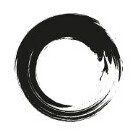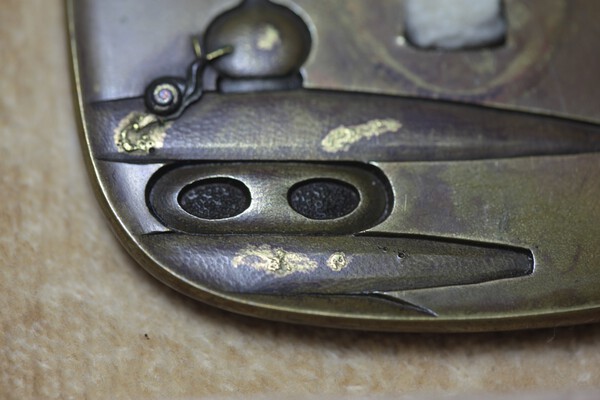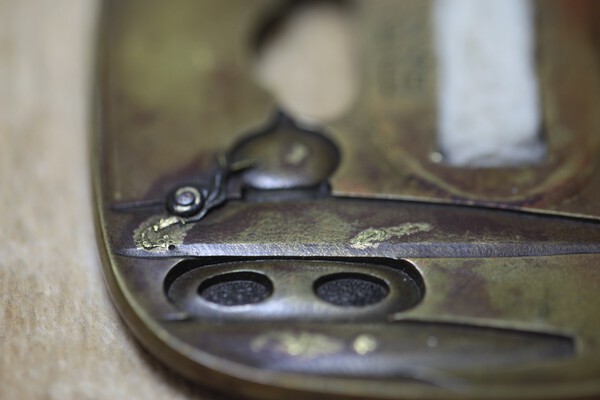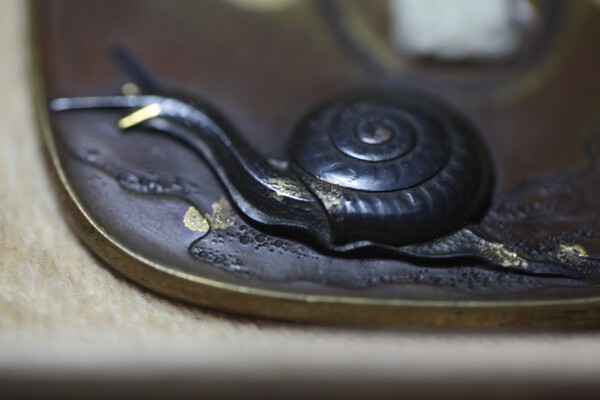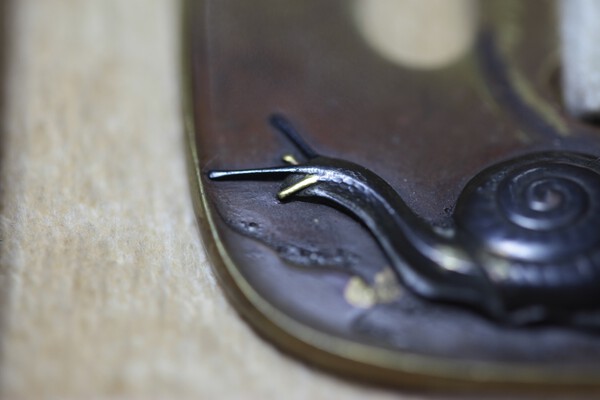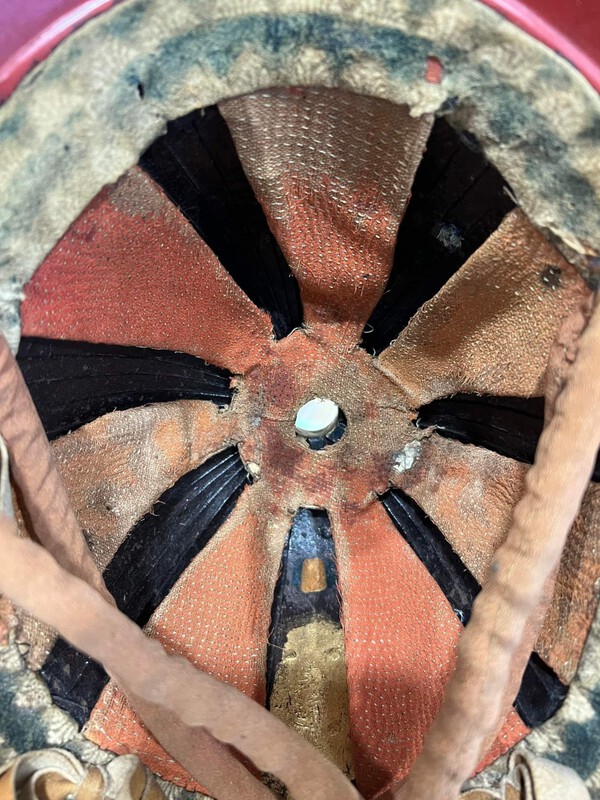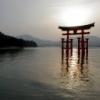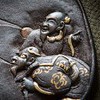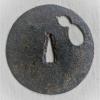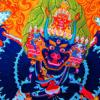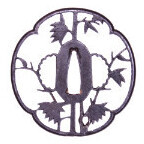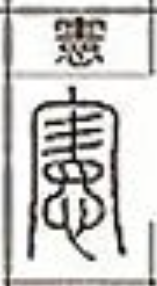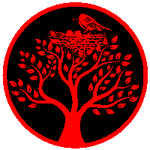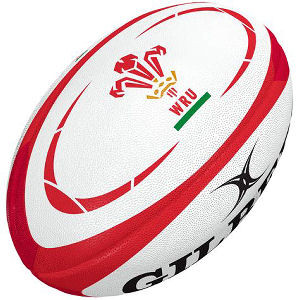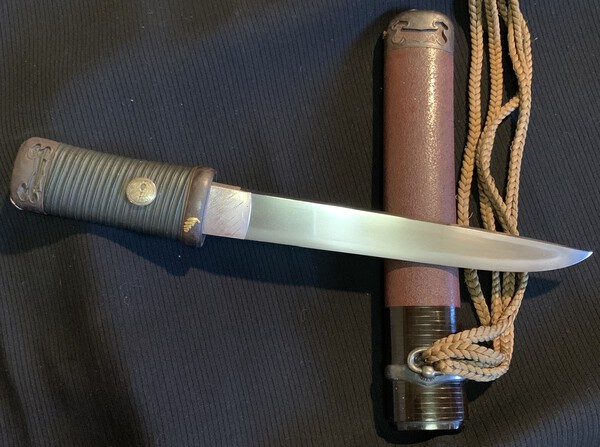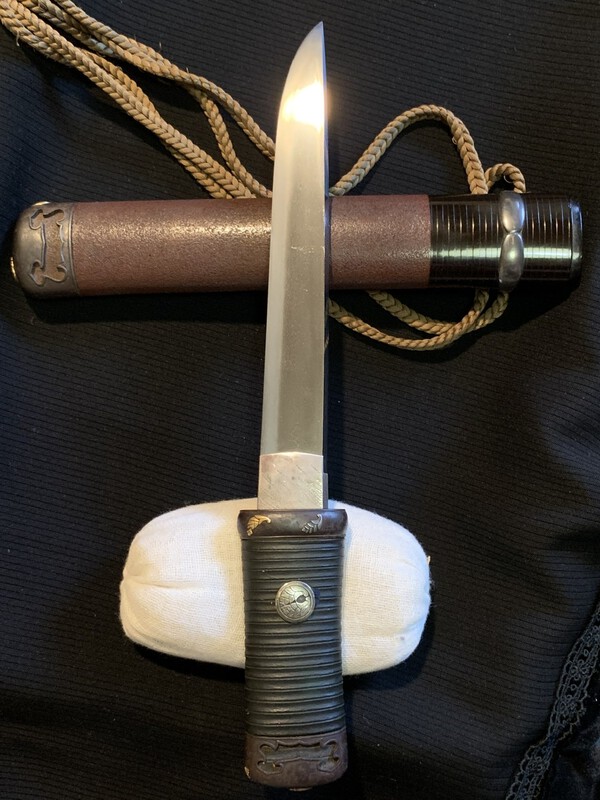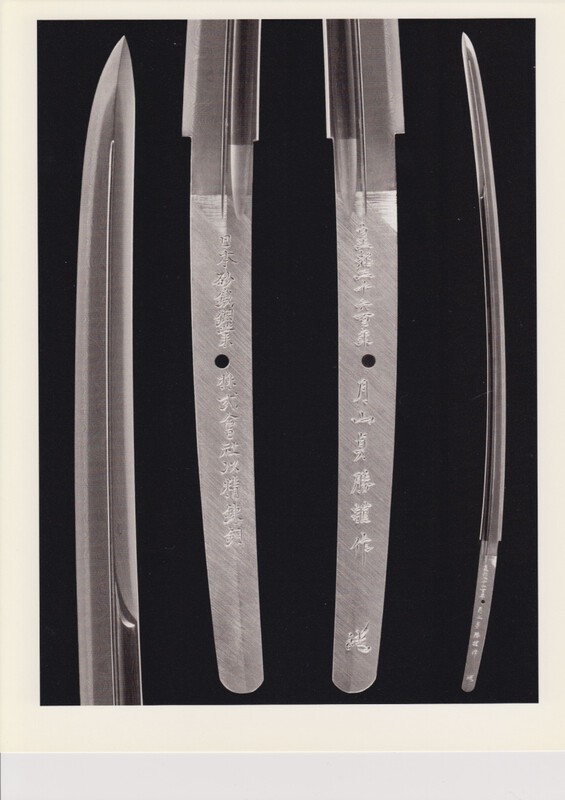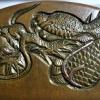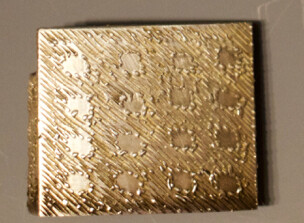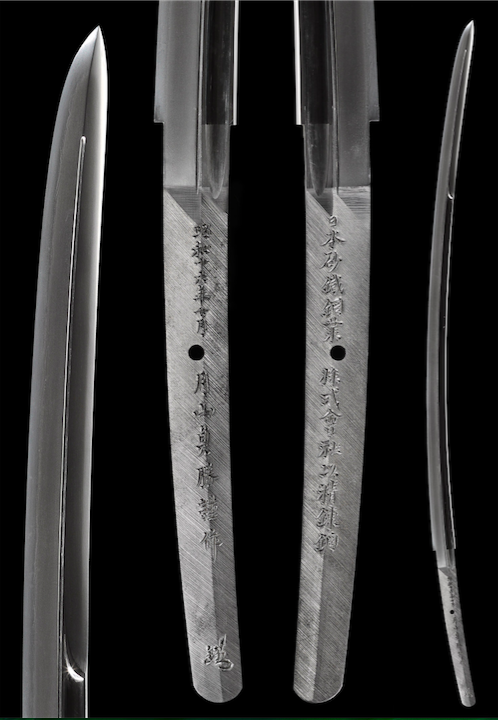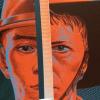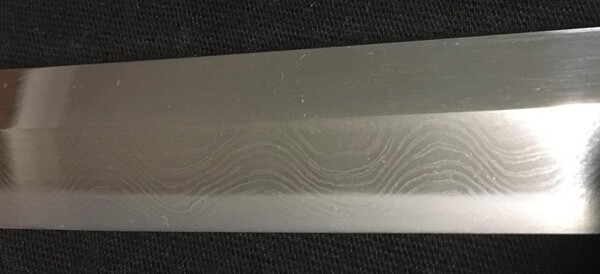Leaderboard
Popular Content
Showing content with the highest reputation on 11/09/2022 in all areas
-
6 points
-
- I received this Wakizashi yesterday, I'm very excited to own this piece of history and wanted to take a moment to share it with everyone. I will do my best to update this post with some better blade profile and tang pictures. Hope you all enjoy, and thanks for viewing. Signed: Kunisada Blade style: Shinogi Zukuri Polish: Old full Polish Temper Line: Gunome - Midare temper w/ a deep temper at point. Cutting edge: 20 + 11/16" Width: 1 + 1/4" Thickness: 6mm at notch Length in mountings: 30" Edo Period: Ca. 1660 era made blade. Tsuba: Marugara shape iron sukashi. Fuchi / Kashira: Bird with bamboo motif w/ gold overlay. Saya: wooden w/ lacquered finish. NBTHK Tokubetsu Kicho paper submitted on 7th July 1968 - J. Hoff4 points
-
Hi, 一名 筑紫槍 Meaning: (This Yari is) also known as Tsukushi-yari/Chikushi-yari. In this case, 一名 means A.K.A.4 points
-
I know by that wooden floor and notorious purple rug you bought it from komonjo on eBay out of Berkeley California. He knows what he is selling so no lost National Treasures there… the guy passes tons of swords and found the perfect schtick selling an endless pipeline of gimei blades with big names chiseled on them on eBay and not giving much in regards to description. Some advice: in the future not only study the blade but kantei the seller as well..4 points
-
Dear Gary, you bought a fine Muromachi kabuto, papered by the NKBKHK as koshu tokubetsu, This is not nothing. Takemura sensei was a member of the Shinsa team, and he is familiar with Yoshimichi’s work. I trust his opinion. Yoshimichi is one of the sasaku, one of the 3 best kabuto smiths ever. About different generations, nothing is known. There is however a difference in his work, what does me think of a production by the master himself, and a production of his workshop., but this is only an assumption. Since it is a grandmaster, you should expect a masterpiece. I saw only +-5 of there incredible masterpieces during my career. I can not judge yours on these pictures, but at first glance it is not impossible that it is made by the master himself, or first generation (according some theories.)4 points
-
3 points
-
3 points
-
Didn't want to start a new thread just for this, but sad to see a very accurate fake of the Wakase Shop's patented drag sayajiri: Being sold on ebay. Fortunately, the China seller calls it a replica. But it's a testament to how good the imitators are getting.2 points
-
2 points
-
Thomas, the first great Meiji registration of weapons happened in Jinshin. I read up about the Bukoshi/Mukoshi (part of the Zoheishi Meiji govt Weapons Department), abolished in Meiji 8, 1875, but it was too bureaucratic for my addled brain. The explanation but not the pronunciation can be found in J Wiki here if anyone is interested in digging further: 1869年8月15日(明治2年7月8日)官制大改革により軍務官に代わって軍事防衛を司る機関として兵部省が設置される[2]。翌年の1870年3月3日(明治3年2月2日)兵器の製造・研究に従事する役所として造兵司が置かれた[3]。1872年4月4日(明治5年2月27日)兵部省が廃止され陸軍省および海軍省が設置されると、各省の管下に造兵司が置かれた[4][5]。 陸軍省では1875年(明治8年)2月3日に武庫司・造兵司が廃止され[6]、それぞれ砲兵本廠・砲兵支廠を経て[7]、1879年(明治12年) 10月に東京砲兵工廠・大阪砲兵工廠となった[8]。2 points
-
Well at least it is centimeters - and not Shaku [尺] - or worse inches! By the way, Google says "In Australia, there is a preference for "centimeter" over "centimetre" (58 to 42)." [at least I am in the majority for once] not that I remember being asked!2 points
-
I see your weapon was registered during the early years of Meiji 明治. 壬申 = 1872-02-09 to 1873-01-28. 九百六十一番 = No. 961 or 961st. 武庫 = Muko. Maybe this area 武庫郡. 司 = means official? Maybe Piers can figure this one out. I found another matchlock that was registered in the same area as yours. 壬申二百五十九番武庫司 Take care BaZZa and hope this helps with the quest.2 points
-
2 points
-
2 points
-
☆ 八雲正清作 = ☆ Yakumo Masakiyo saku. 昭和十九年六月 = June 1944. Trystan, thanks for the above and below is another one for you to look at. 八雲正清作 昭和二十年三月2 points
-
I think this kabuto is rather interesting! It bears a big name chiseled in the hachi, and gimei or not, the fact that his later owner feels worth to spend some money in refurbishing it, tells something. Furthermore, we are lucky enough to "know" the craftsmen who was commissioned with the job, so we can tell approximately when it happend. That's quite cool, I guess2 points
-
If people insist on breaking the rules, then I have NO problem banning them. Or if they are just rude or obnoxious. Take a break for a day. Then see if you feel like being here or not. Sick of people thinking the rules don't apply to them. People sharing their stuff shouldn't have to worry about others targeting them for no real reason.2 points
-
I think that comments should contribute to the post and in my opinion this doesn't You made a comment on one of my hanpo posts stating it was rubbish and not worth repairing which I thought contributed nothing of worth. You sell some pretty low value stuff but you have never had anyone state this in a reply to your selling posts. I bought one of your amour stands and the quality was dire but it didn't cost much so it's an item I can strip down and remove the sharp edges and improve the finish. I never stated this in a reply to your post as I left it to the potential buyer to make up their own mind This is quite hard to write but after your repeated caustic replies I felt now was a good time to air my views. I can be as harsh as you but I suppose I'll now be on your 'blocked' list I have nothing more to say and will not be drawn into an exchange of correspondence You sell quite a few items on the NMB and I wonder if you make a contribution the NMB although this is non of my business When I sell an item I contribute 5% of the sales to to the NMB and am happy to be a Gold member but that is my free choice2 points
-
1 point
-
盡忠報国 Jinchū Hōkoku Its a patriotic phrase, commonly seen on WW2 items (particularly flags). "Loyalty to Country".1 point
-
Grev, The civil branch of the military were called Gunzoku. They wore military styled uniforms and had their own rank structure. The chokunin rank was equivalent to General officer. I don't know enough about them to say that they worked navy, but this is a navy dress sword. Dress swords weren't fighting blades and were simply one-piece steel with faked hamon. Only the real fighting blades used the mekugi. You can read a bit more on Nick Komiya's post Here. I believe there is a better, more complete discussion elsewhere, but that one should help. Maybe someone who knows the pre-WWII sword knots, like @PNSSHOGUN, can comment on the tassel.1 point
-
1 point
-
Dear Jonathan. Nice sword and thank you for sharing your excitement. Now comes the fun part, digging for information and looking for comparable Kunisada mei, learning to see what is in the hamon and so forth. Enjoy! All the best.1 point
-
Nice photos. I certainly hope this nakago wasn't cleaned.. if it was - yikes. Otherwise, way better photos than the original seller, no doubt. J.1 point
-
Dale, I think that seller's tape measure is older than a lot of the Tsuba we see on this forum1 point
-
1 point
-
1 point
-
It is a gold heart shaped carving, or the kanji for One (一) Heart (心)? If the nagasa is 21.5", it is unlikely to be a mantetsu-to. As mentioned, that inscription is seen as a part of other mei. Alternately, perhaps a name. Is it kinpunmei/kinzoganmei? https://nihontoclub.com/view/smiths/meisearch?type=All&mei_op=contains&mei=一心1 point
-
Roger, You are too kind! Your input into the progression of this "amazing" (in my opinion) thread is much appreciated!! Yes, my friend, you are correct. There is still "maybe a little way to go yet". We will see what happens! With respect, Dan1 point
-
Indeed, Colin it can be a bit of a trek sometimes. I know our American friends think that the distances we travel around the UK are small, but given the congested roads and cost of fuel, it can take longer and cost more than travelling three times the distance in the USA! However, for private sales, I've found travelling to be a double-edged sword (pun intended!) Yes, it costs a fortune in petrol and takes ages, but I've had the pleasure of meeting other UK collectors / NMB members when travelling to buy or sell swords. Jon1 point
-
The date should be when he became a Gunto smith instead RJT smith .Says on the top of that website :受付年月日1 point
-
@Ford Hallam I wonder if you can be persuaded to once again join this topic and give your views?1 point
-
One more thing. Yoshimichi’ s mei is on the paper. This is important. It confirms the credibility of the mei.1 point
-
Dan, I sincerely think that your "crusade" for EDO JIDAI cast iron TSUBA is at its end. The fact that a certain technique was available does not mean that it was applied on a wider scale. It was perhaps technically possible to cast iron TSUBA but why should the craftsmen have done it? 1) Casting was done in single (lost) molds. There was no die casting to increase the production output, and for a quality copy the mold had to be destroyed afterwards. The mold material was a mixture of fine sand and clay, and it had to be prepared pre-casting for the process. 2) The raw cast item was not useful in its technical properties as a TSUBA. If there were cast iron TSUBA meant to be used by the SAMURAI, they would have to be treated for more toughness, possibly by the tempering method. This would have reduced the risk of breaking in battle, but it would still not attain the properties of forged TSUBA. Remember: tempered water kettles (not 'tea' kettles) were tougher than standard cast ones, but could be broken anyway! 3) A raw cast iron item requires a lot of work to make it functional. Casting seams are a part of it, surfaces another. Recesses and sharrp crevisses could not be reproduced, so the choice of motives was limited. A lot of work is required to make a cast iron item look acceptable. And there were no grinding wheels and steel brushes for faster work in those times! 4) I doubt that the aesthetics of cast iron TSUBA would have satisfied most SAMURAI who were known for their sense of quality and beauty 5) There were many TSUBA workshops and craftsmen/artists in EDO JIDAI who made their living with the manufacture of TSUBA. Simple items could be forged easily and in a short span of time, so what could they possibly win with a casting method that required a lot of charcoal for the higher temperatures, equally a lot of cleaning and refining work, with a relatively small output in numbers, and without making a comparable amount of money? These are my objections to the subject of a widespread manufacture of cast iron TSUBA in the EDO period that were meant for use with the SAMURAI. But you can convince me of the contrary if you find representative numbers of cast iron TSUBA (papered) datable to the EDO JIDAI.1 point
-
Jean, Throughout about the 10 months that this thread has appeared on the forum you have been a great and valuable help. Your insights, thoughts and opinions are of excellent value; and they are much appreciated! You always seem to “challenge” me. That is much appreciated, since it forces this “old man” to continue his research. In so doing I am constantly learning. Thank you! Now, in your most recent post you again “challenged” me with your below statement which refers to a quote from my previous post-- “.... there is very little (almost none!) historical evidence written about “cast iron” tsuba possibly being produced in the Edo period..... Dan, do you have a suspicion what that might mean?” A very legitimate and valid question, Jean. Thank you. But I am sending that question back to you Jean, “do you have a suspicion what that might mean?” As you notice I used the term “oral tradition” in my last post. That is defined as- “a community's cultural and historical traditions passed down by word of mouth or example from one generation to another without written instruction.” That definition is found here - https://www.dictionary.com/browse/oral-tradition Now, Jean, I make reference to the following- Below is from this link- https://en.wikipedia.org/wiki/History_of_education_in_Japan “Japan was very unified by the Tokugawa regime (1600–1867); and the Neo-Confucian academy, the Yushima Seidō in Edo was the chief educational institution of the state. Its administrative head was called Daigaku-no-kami as head of the Tokugawa training school for shogunate bureaucrats. When the Tokugawa period began, few common people in Japan could read or write.” And more information was continued on that site, that I did not consider relevant to the issue. Also, I would like to refer you to this “hierarchal” scale on the “Edo” period (notice where “artisans” fall on the lower end of the scale). Which was found at this website- https://factsanddetails.com/Japan/cat16/sub107/item502.html So, my conclusion is that there are very few (or none at all) written records of early Edo period cast iron tsuba casters because those artisans did not know how to read or write (as verified by the above research). If anything, they would have communicated their methods by “oral tradition. That is why I stated “oral tradition” in my last post! Anyway, my friend, the adventure continues!! With respect, Dan1 point
-
I'll delete whatever I like. And now that we deleted one member for interfering with sales, do we want another so soon? Are you saying that Toku Hozon isn't one level under Juyo if this was a sword? I don't know the armour levels or how that society works, but if they issue papers and this is the highest paper before Juyo is awarded, then there is NOTHING wrong with stating the certificate is one level under juyo. TH is one level above Hozon. Levels are how origami works. Do you have intimate knowledge of how the Japanese armor society works?1 point
-
I thought these documentaries would help some beginners so I've made a list: In love with the Samurai Sword(Polishing Documentary) https://www.youtube.com/watch?v=9YKj3VCnX38 NKH: The Art of Discipline https://www.youtube.com/watch?v=JYega7KQa2s NHK: The Art of the Japanese Sword https://www.youtube.com/watch?v=DCYZSqEKmq0 Budo(rare) Documentary https://www.youtube.com/watch?v=cQ6HJf70fzQ Budo History of Japanese Sword https://www.youtube.com/watch?v=YqqRrDG-NPs A visit to female Japanese Sword Dealer https://www.youtube.com/watch?v=rCEQNzqgpyw Nat Geo. Forging a Katana https://www.youtube.com/watch?v=VE_4zHNcieM Way of the Swordsmith https://www.youtube.com/watch?v=DqXfvmGU8cs Secret World of the Swordsmiths https://www.youtube.com/watch?v=gxwWf-MfZVk Sword Making(Portland Art Museum) https://www.youtube.com/watch?v=2WkWNDDrQO4 Nigen Kokuho(with cutting test) https://www.youtube.com/watch?v=08Vvs1nK-w4 Tsukamaki https://www.youtube.com/watch?v=I9a6dFGM-ks Modern Smiths https://www.youtube.com/watch?v=0glduW4-EPY Katana Kaji(Post WWII Documentary) https://www.youtube.com/watch?v=f7z9pkQnz_0 Japanese Sword as the Soul of the Samurai https://www.youtube.com/watch?v=_UxL1AxztNg Hattori Masanaga(Tsuba documentary) https://www.youtube.com/watch?v=K8ibRhcEevc1 point
-
This nihonto arrived even more beautiful than I expected! Absolutely stunning piece of history, amazing communication, some of the best packaging I've ever seen, and a beautiful oshigata! Thank you so much for helping me buy my first nihonto!1 point
-
Thank you, Piers, for your translation of "Tsubaology"! Although, since I am not familiar with the Japanese language is "Tsuba-gaku, Tsuba no Kenkyū." one term or is it an "either or" type choice?? Thanks again! With respect, Dan1 point
-
Somehow I would like to say Būshū Tsuba. And I agree with above said there is a likelihood to Shōami artist. @Ford Hallam: very nicely done! Cheers from a material science fellow.1 point
-
1 point
-
1 point
-
1 point
-
I have a yoroidoshi tanto by (Gassan) Sadahide. https://www.nihonto.com/the-dewa-gassan-school-%E5%87%BA%E7%BE%BD%E6%9C%88%E5%B1%B1%E7%B3%BB/ For further Dewa Gassan info, with Sadahide katana photo (copied below) see link. Quote: The blade shown above is a beautiful katana by Gassan Sadahide (月山貞秀). Sadahide (貞秀) was a student of Gassan Sadayoshi (月山貞吉) and a contemporary of Gassan Sadakazu (月山貞一). His works are much scarcer that those of his contemporary, Sadakazu (貞一). This blade bears the typical characteristics taught to Sadahide (貞秀) by his teacher Gassan Sadayoshi (月山貞吉). His given name was Sugimoto Kônoshin (杉本廣之進) and his original kuni was Dewa (出羽). This sword bears a sayagaki by Tanobe sensei that reads as follows: Sesshu Amasaki Ju Unzen-shi Sadahide in a six-character signature and dated Ansei 2 nen (1856). Sword was custom ordered by Konishi Yukiya. Sadahide was a student of Gassan Sadayoshi. This sword has a magnificent appearance because of its shape and dimensions. It exhibits a thick suguha with kinsuji. The deki is highly dignified. Length is 2 shaku 3 sun 8 bu. Sayagaki signed by Tanzan Hendo (pseudonym or art name of Tanobe Michihiro) in the year of the horse 2014. The actual signature on the sword is Unzenshi Sadahide Tsukuru (雲仙子貞秀作). The ura is dated Ansei Ni Nen Ni Gatsu Kichi Nichi (安政二年二月吉日) (Made on a lucky day in February of 1856). Tame Yukiya Konishi Kun Kitaeru Kore (為雪屋小西君鍛之) (This was forged for Mr. Yukiya Konishi). This sword is an excellent example of the Dewa Gassan school. As noted, the nagasa is 72.2 cm or 28 7/16 inches. It has a shallow tori sori and an extended kissaki. Overall it is a grand sugata as was typical of Sadayoshi (貞吉) and his students. The hamon is a hoso-suguha with a bright nioi guchi that is covered in nie. There are kinsuji and other hataraki within the hamon. The hada is a vibrant mokume and there are areas of what can only be called a form of ayasugi. The nakago is beautifully finished and elegantly signed. It is interesting to know that the person who ordered this blade was a merchant from the Konishi family. Certainly, before the waning of the Samurai era no one except a member of the Samurai class could have owned and carried a blade of this length. The Konishi family was well established as merchants who moved from Kyoto to Osaka around this time (Ansei). The Konishi family business began with pharmaceuticals and expanded into alcohol. The family business still exists today. Some of their early buildings have been preserved as historically significant buildings.1 point
-
Sadakatsu blades Couple of quick scans - The kogarasu maru style is in full ayasugi hada - made to commemorate 2600 years of Japanese empire, 1940 ( Hozon papers ) The shinogi-zukuri also shows ayasugi particularly at opposite ends - made in july 1942 as a commission for the Sumitomo Banking Corporation ( Tokubetsu Hozon papers ) Both still in original polish ,both with Gassan habaki. Sorry for poor quality.1 point
-
1 point
-
1 point
-
1 point
-
Wow David, nice Sadakazu. I add as my contribution, my 1936 Sadakatsu. It ticked many of my boxes, being made by Sadakatsu himself before his son started making and signing swords under the Sadakatsu name, and having the Ayasugi hada, for which he is known. By the way David, is that a Gassan style habaki?1 point
-
Just to clarify, with Japanese swords..."tourist" means late 1800's when Japan was opened to the West. Lots of trade and exports. In our side of the world, tourist means yesterday in New York. In Japan, early 1900's is considered brand new1 point
This leaderboard is set to Johannesburg/GMT+02:00

